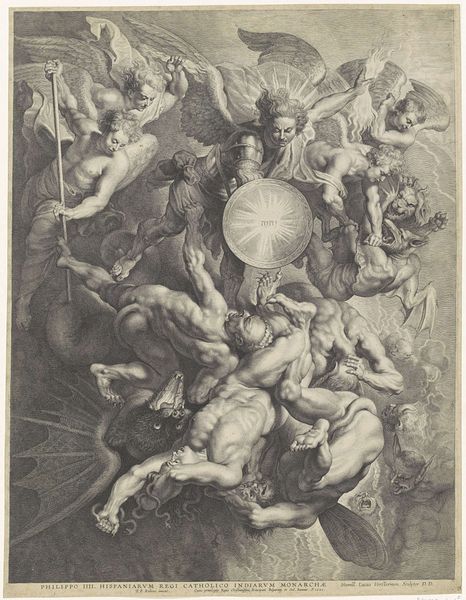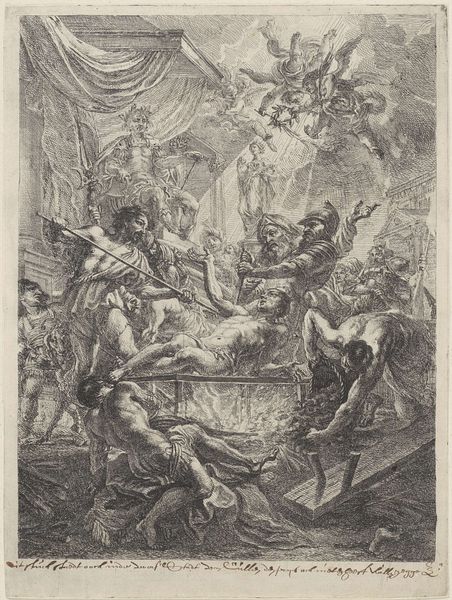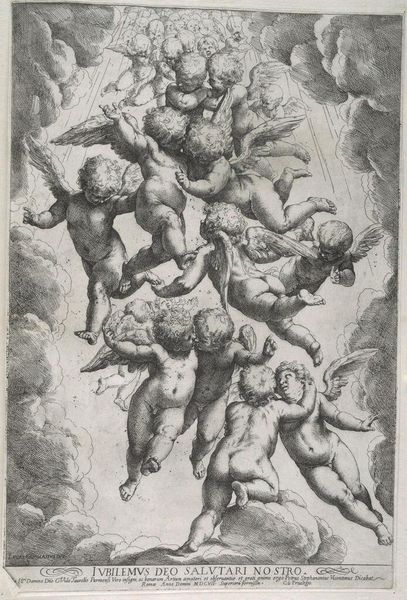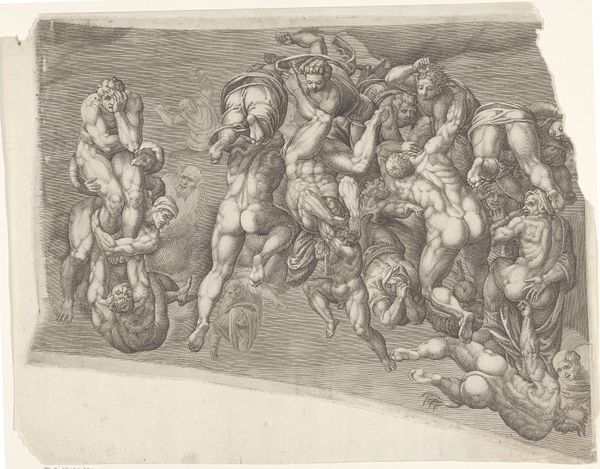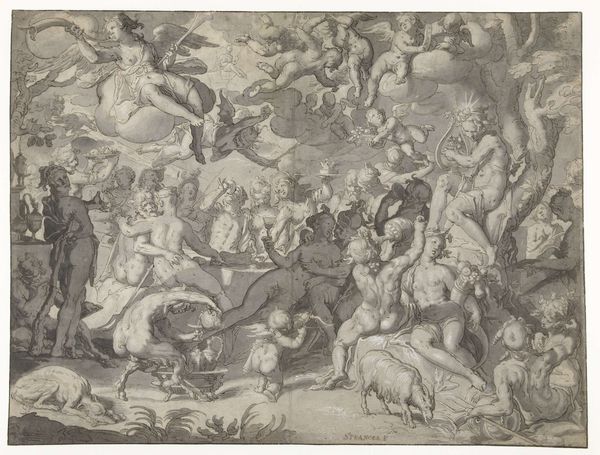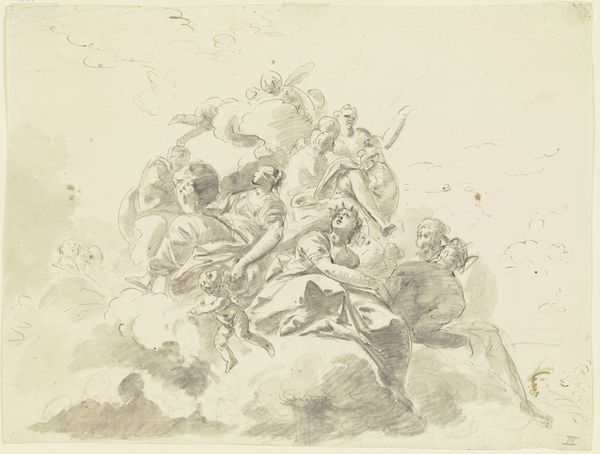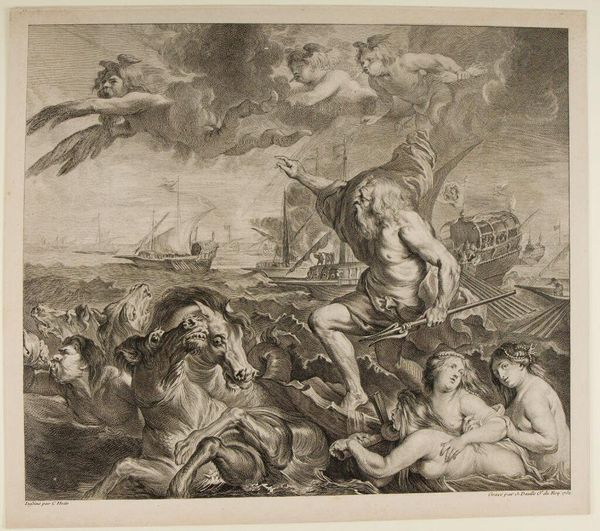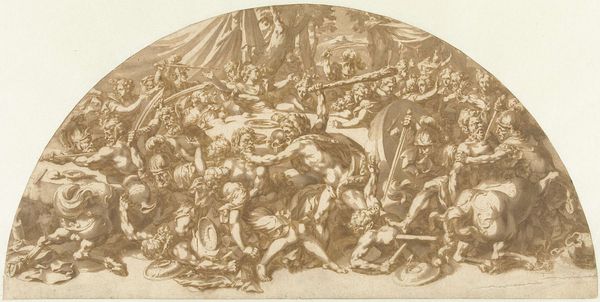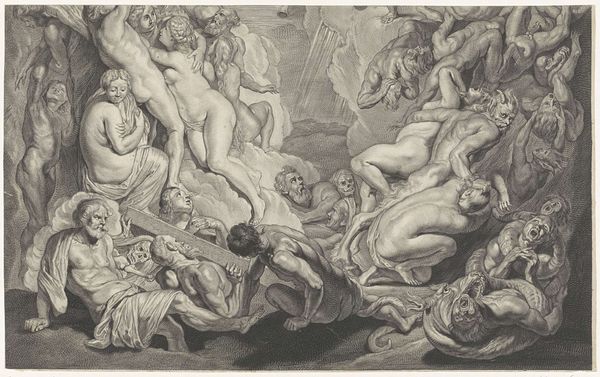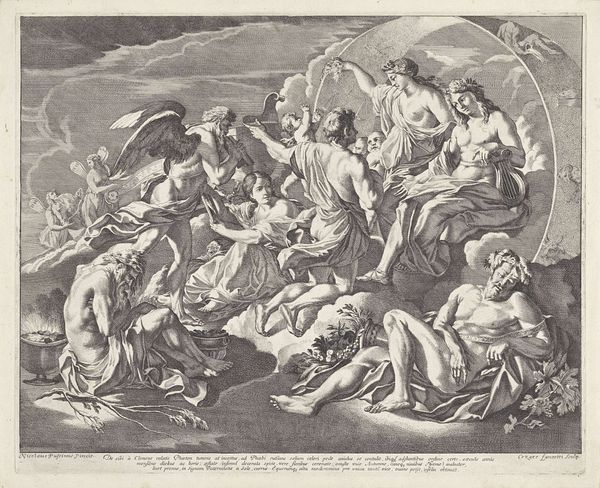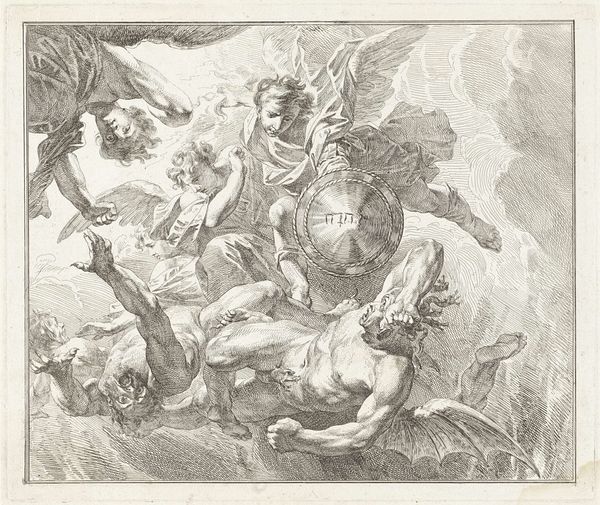
print, etching, engraving
#
allegory
#
baroque
# print
#
etching
#
charcoal drawing
#
figuration
#
form
#
charcoal art
#
line
#
history-painting
#
engraving
Dimensions: height 358 mm, width 553 mm
Copyright: Rijks Museum: Open Domain
This print, depicting the Fall of the Damned, was made by Jonas Suyderhoef, a Dutch Golden Age printmaker, sometime between 1613 and 1686. It's an engraving, which means that the image we see was incised into a metal plate, likely copper. Engraving is a demanding, skilled practice. The artist uses a tool called a burin to carve lines into the plate's surface. The depth and density of these lines determine the tones in the print – deeper, closer lines hold more ink, resulting in darker areas. Consider the labour involved. Each line, each minute detail of muscle, angel wing, and tormented face, was painstakingly etched by hand. This wasn't a quick process, demanding precision and control. The result is a mass-produced image, but one born from intense, skilled handwork. Thinking about process helps us appreciate the physical effort that underlies even seemingly ethereal subjects like divine judgement. It bridges the gap between 'high' art and the value of skilled making.
Comments
No comments
Be the first to comment and join the conversation on the ultimate creative platform.
